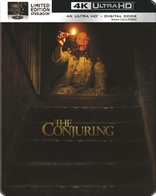I'd need a little more info to pinpoint the problem (OS, driver version, PowerDVD version), but I might still be able to help out. This is a long post, but it should be comprehensive and get you the PQ you want, as well as the dark bars.
The likely problem is that you are calibrating the source, not the display. You should almost always start calibration at the display. So, the first thing I would do would be to reset both your PowerDVD video settings and your nVidia control panel video settings to what they were "out of the box" (as it were). Even better would be to uninstall and reinstall both, in this order:
1a) Uninstall PowerDVD.
1b) If necessary, download latest nVidia display drivers, which really does make a difference (IMO) in how well PowerDVD runs.
163.71 for XP or
163.69 for Vista 32-bit. I wouldn't even be running Vista 64.
2) Uninstall the nVidia drivers. The PC should ask you to restart. If not, restart after uninstall is complete.
3) After the restart, install nVidia display drivers, which should ask you to restart. If not, restart after install is complete.
4) After restart, open up the nVidia control panel. Under
Video & Television->Adjust video color settings, make sure that all the controls are as follows (don't forget to hit "Apply" after each changes):
Standard tab: Everything at 50% (Gamma should be grayed out and/or at 0%), "Apply these settings to all video tech" checked.
RGB Gamma tab:"Use RGB Gamma" unchecked and everything should be grayed out.
Correction tab: Select "Do not use color temp correction"
Enhancements: Everything should be at 0% and "Use inverse telecine" should be unchecked. *NOTE: Some have mentioned putting NR up one tick. I'd just as soon leave it alone unless someone can convince me otherwise.
5) After applying all settings, close nVidia control panel and restart.
6) After restart, install PowerDVD. Ensure that you have the latest version (IIRC it's 7.3104a or something like that). After you install PowerDVD, restart again. I know, it's a lot of restarts, but this is the last one. I promise!
7) After restart open up PowerDVD but do not play a disc. Go to
Configuration (Ctrl-C), and go to the
Video tab. If possible, select "Use color profile" and select "Original". Depending on your PC hardware, you may or may not want to check "Enable hardware acceleration". Apply the settings and play a disc to test which setting causes the least playback issues like dropped frames or stuttering. When you get that setting working, play the disc again, go to the PowerDVD
Video tab again, click on the "Advanced..." button, and check for the
Video Quality tab. If it's there, select "Best Quality". Apply all the settings, stop the disc, and quit PowerDVD.
You should now have your source (i.e. your video card/drivers and PowerDVD) and what are essentially baseline. Now it's time to calibrate the display! There's several ways of doing this, but the easiest is through the "0 to 100 IRE Split bar" test pattern at
http://www.w6rz.net/, which should work in PowerDVD. If they don't, download VLC from
http://videolan.org to play them back. Essentially, you want to drag and drop the TS file into PowerDVD (or VLC), pause it immediately, and go to full screen. Now, your Samsung monitor should have a button for video controls of it's own. You're looking for the one that has controls for Brightness and Contrast/Picture. Select the Brightness control and turn it down until you can just barely tell the difference between the two blackest bars. If you want, you can set your Contrast/Picture control as well, but I'd save that for more extensive calibrations (see below). For now, I'd set it to around the 75% mark, although you could also set it around the 50% mark to compare. If there are Color controls, see if they have a temperature or tone and set it to "Warm" and for quality presets, turn it to Original or Off. If you've done everything right, the black bars should black (or reasonably so), you're movies should look like movies. You may not have radioactive reds and the screen may be a little dimmer than you are used to, but that's what you want for good movie PQ.
If you want to delve a little further, there are DVDs such as Digital Video Essentials, Avia, or the GetGray disc from
http://www.calibrate.tv that can walk you through the process, although DVE has a Blu-ray version coming out on Oct 30 that I would pick up instead, or the Avia Blu-ray early next year. Another method is to get a Sony-made BD (it has to be from Sony Pictures) and while the menu or movie is playing, input the code 7-6-6-9 to bring up about a minute of test patterns and pause it on the black-grey-white bars, but there's nothing to help you out.
Whew! Monster post, but there you go. Let us know how it turns out!


























 Linear Mode
Linear Mode

